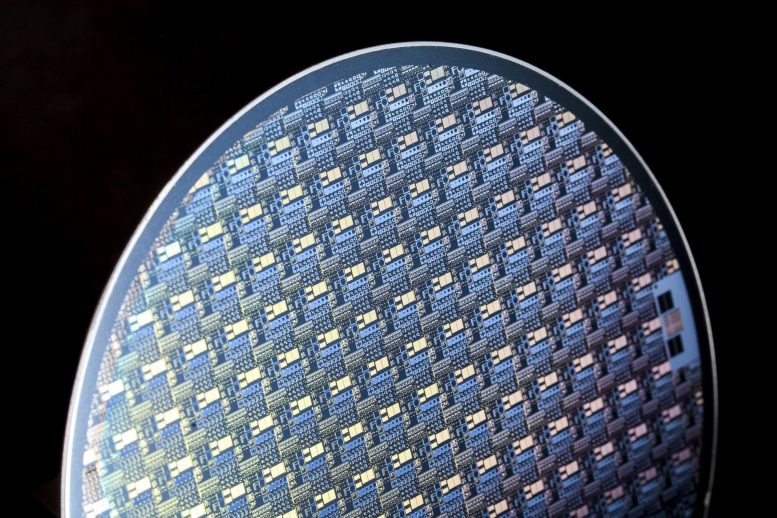
The Fraunhofer Institute is developing efficient, gallium nitride-based semiconductor components for key energy transition technologies, aiming to enhance performance and reduce costs in power electronics. These advancements support crucial areas like electric vehicles and renewable energy, propelling a shift towards a climate-neutral society. Credit: Fraunhofer IAF
Scientists have developed GaN semiconductors to boost efficiency and reduce costs in electric vehicles and renewable energy, aiding the energy transition.
Key technologies crucial for the energy transition—including electric vehicles, charging infrastructure converters, energy storage systems, as well as solar and wind power plants—depend heavily on electronic components that deliver both high performance and efficiency. Wide band gap
Researchers at the institute are currently working on the realization of GaN-based HEMT technologies with blocking voltages up to and above 1200 V, which can be used for numerous CO2 reduction measures as part of the energy transition, such as bidirectional charging of electric vehicles. GaN HEMTs are intended to provide an alternative to already available metal-oxide-semiconductor field-effect transistors (MOSFETs) made of silicon carbide (SiC), which are very cost-intensive and therefore not suitable for widespread use. Fraunhofer IAF is pursuing several approaches for this purpose: the processing of GaN HEMTs on Si substrates (GaN-on-Si HEMTs), the use of highly insulating carrier substrates such as sapphire, SiC or also GaN (GaN-on-insulator HEMTs) and the development of vertical GaN technologies.
GaN-on-Si HEMTs, GaN-on-insulator HEMTs, and vertical GaN HEMTs for high-voltage applications
All approaches enable high-performance, efficient, and cost-effective high-voltage GaN components with great application potential in key technological areas of the energy transition. Lateral GaN-on-Si HEMTs are already commercially available, but are limited to a blocking voltage of 650 V due to limited GaN layer thicknesses. By continuously optimizing the material and its processing (epitaxy, processing, structuring), researchers at Fraunhofer IAF were able to demonstrate GaN-on-Si HEMTs with static blocking voltages of over 1200 V. In addition, the power components were switched up to 1100 V in an application-oriented measuring stand (double-pulse measurements).
In the second approach, the researchers replace the conductive Si with highly insulating carrier substrates such as sapphire, SiC, or GaN, which virtually eliminates the voltage limit. Lateral GaN-on-sapphire HEMTs can be manufactured cost-effectively based on relevant preliminary work for light-emitting diode applications and can be produced in existing production lines.
Vertical GaN technologies, in which the current flow runs vertically through the material layers, enable even greater performance with higher efficiency and integration capability at the same time. Within the next decade, the researchers at Fraunhofer IAF want to make vertical GaN power ICs suitable for industrial use. The aim is also to help shape the next technological leap in the transformation towards a climate-neutral society.
Meeting: PCIM Europe 2024
Dr. Richard Reiner will provide an overview of the development of lateral and vertical GaN power ICs in his presentation “Lateral and Vertical GaN Power ICs: Status and Future,” which he will give on June 12 at 10:50 a.m. at PCIM Europe on the Technology Stage in Hall 7.
Dr. Richard Reiner will also provide an insight into the various lateral 1200 V GaN technologies in his presentation “More than 1200 V Breakdown and Low Area-Specific On-State Resistances by Progress in Lateral GaN-on-Si and GaN-on-Insulator Technologies,” which will take place on June 12 at 14:50 on Stage Brussels 2 in the “Device Concepts” session.
Jun.-Prof. Dr. Stefan Mönch will also represent Fraunhofer IAF at PCIM Europe with a presentation on June 11 at 14:50 on Stage Brussels 1 in the session “GaN Converters”: “Over 99.7 % Efficient GaN-Based 6-Level Capacitive-Load Power Converter.”